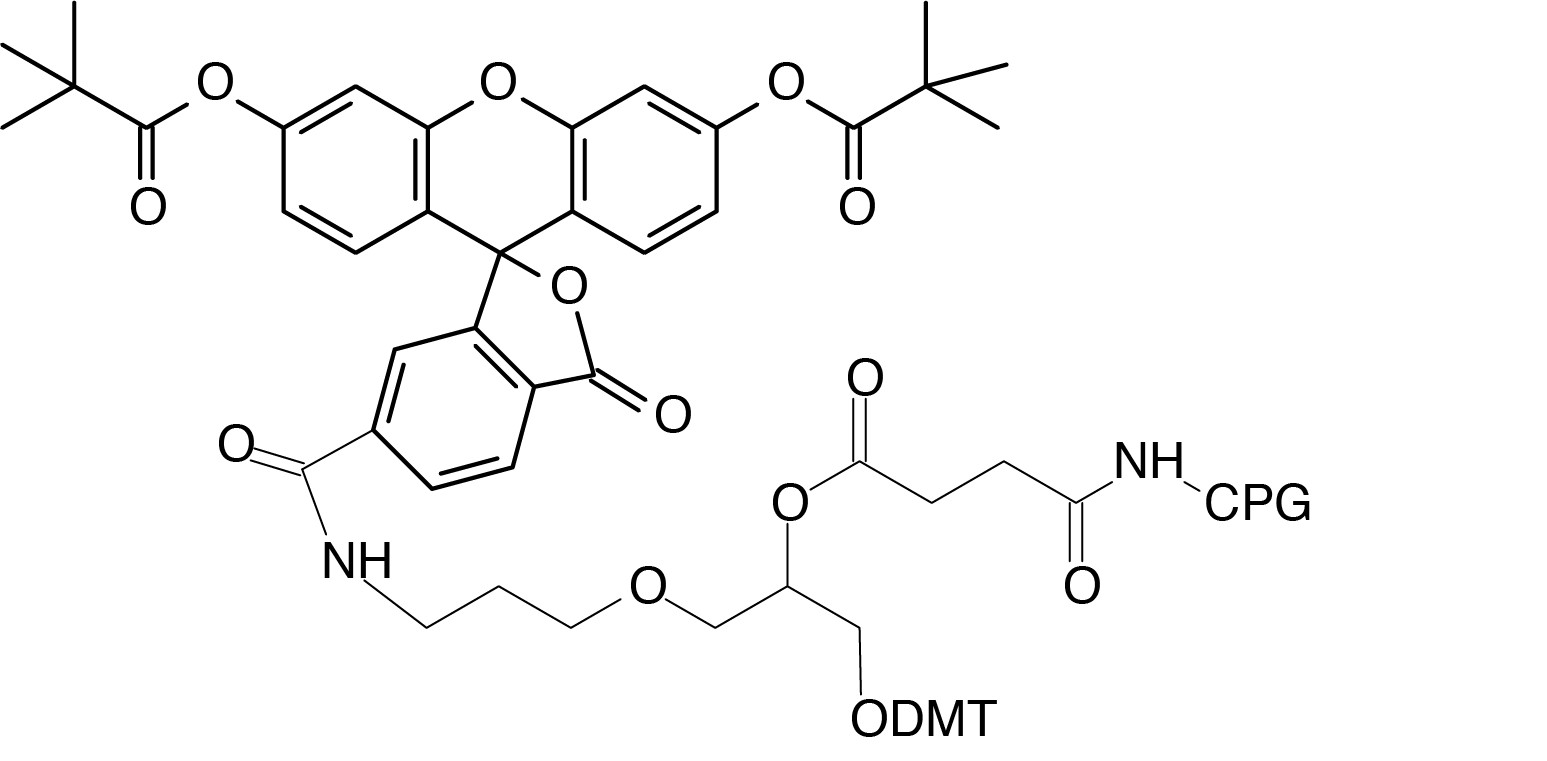
Catalog Number: 20-2961-xx
Description: 3'-(6-FAM) CPG
1-Dimethoxytrityloxy-3-[O-(N-carboxy-(di-O-pivaloyl-fluorescein)-
3-aminopropyl)]-propyl-2-O-succinoyl-long chain alkylamino-CPG |
|
|
F.W.: 569.46 |
Diluent: Not Applicable |
| Coupling: This support should be used in a manner identical to normal protected nucleoside support since it contains the DMT group. |
| Deprotection: Cleavage of the oligonucleotide from this support requires 2 hours at room temperature with ammonium hydroxide. Complete the deprotection using the protocol required by the nucleobases. |
| Storage: Freezer storage, -10 to -30°C, dry |
| Stability in Solution: Not Applicable |
FLUORESCEIN LABELLING
5’-Fluorescein phosphoramidite contains no 4,4’-dimethoxytrityl (DMT) group and can be added only once at the 5’-terminus, thereby terminating synthesis. This product is prepared using the 6-carboxyfluorescein derivative. The tetrachloro-, hexachloro-and dichloro-dimethoxy-fluorescein phosphoramidites are designed to take advantage of the multicolor detection capability of modern DNA sequencers and genetic analyzers. Fluorescein phosphoramidite is designed to produce the same fluorescein-type structure as had been previously prepared using fluorescein isothiocyanate (FITC). Our fluorescein phosphoramidite also contains a DMT group to allow quantification of coupling. The analogous structure, 6-Fluorescein Phosphoramidite, prepared using 6-FAM, is also available, along with 6-Fluorescein Serinol Phosphoramidite. Fluorescein-dT can be inserted into the desired sequence as a replacement for a dT residue.
We offer five fluorescein supports. Fluorescein CPG has traditionally been used to add the fluorescein label at the 3’-terminus. The analogous structure, 3’-(6-Fluorescein) CPG, prepared using 6-FAM, is now also available, along with 6-Fluorescein Serinol CPG. We also offer 3’-(6-FAM) CPG and Fluorescein-dT CPG, both derivatives of 6-carboxyfluorescein (6-FAM). Both are single isomers and use an amide linkage which is stable during cleavage and deprotection and does not allow isomer formation. 3’-(6-FAM) CPG allows effective blockage of the 3’-terminus from polymerase extension as well as exonuclease digestion. Fluorescein-dT CPG allows both of these enzymatic activities to proceed. Normal cleavage and deprotection with ammonium hydroxide readily generates the fluorescein labelled oligos.
If you cannot find the answer to your problem then please contact us or telephone +44 (0)1954 210 200